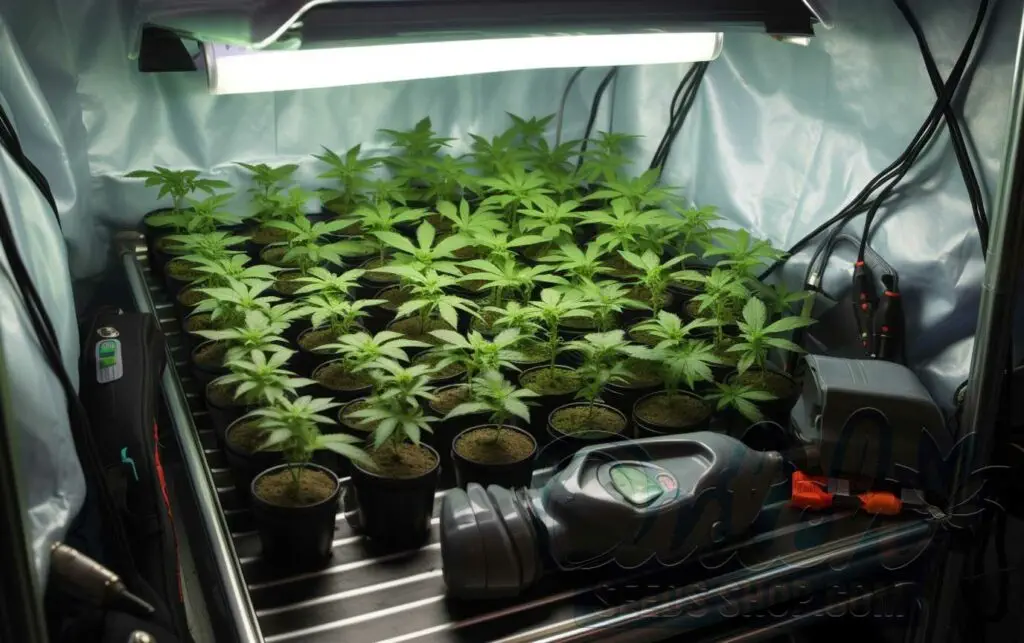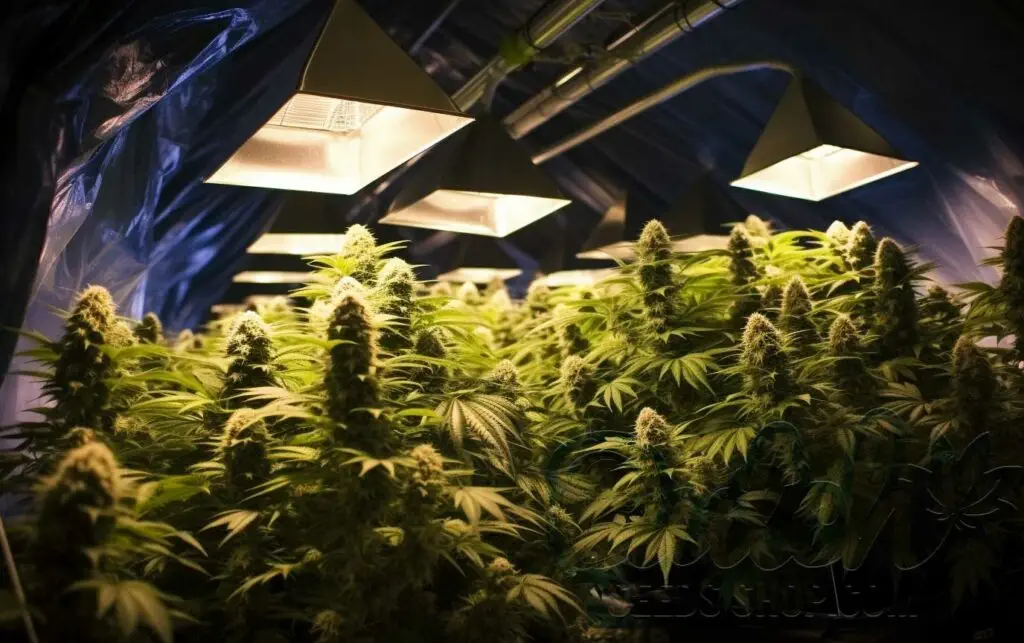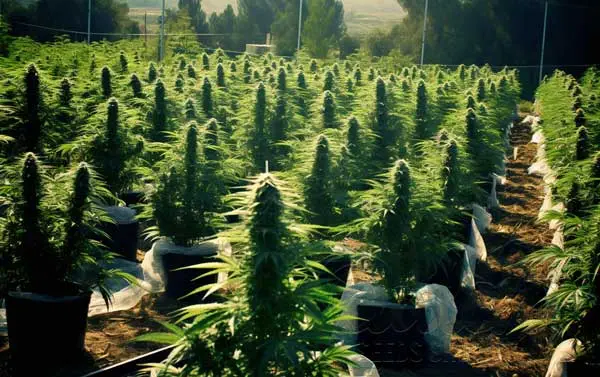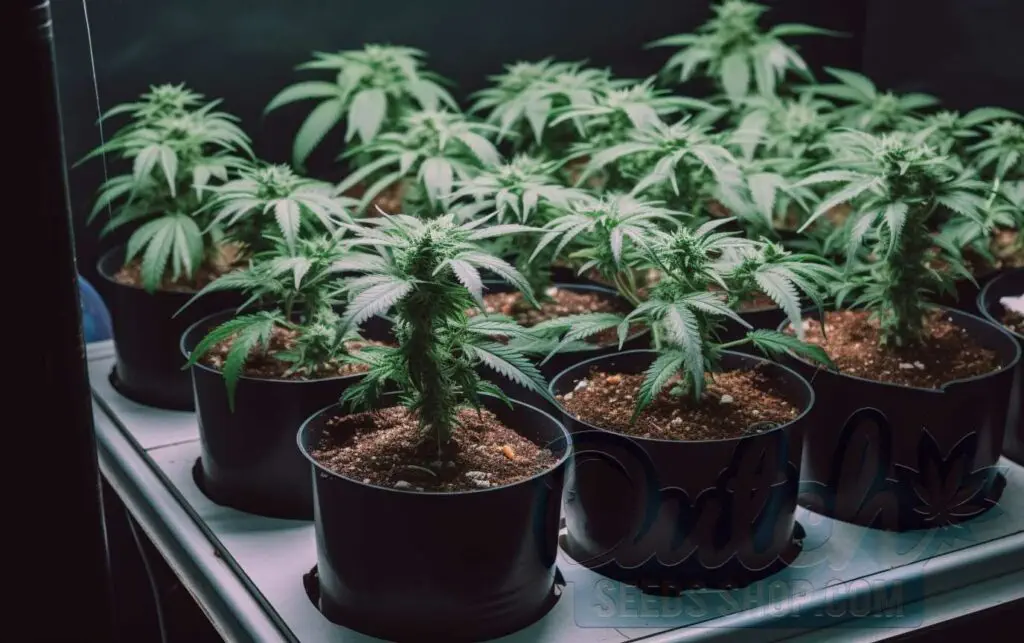How to Grow Kali Mist Strain
The Kali Mist strain, with its unique blend of Colombian, Thai, Cambodian Sativas, and Afghani Indica, offers an exciting opportunity for growers. Renowned for its high THC levels and vibrant effects, understanding how to cultivate this strain is crucial for maximizing its potential.

Get To Know Kali Mist Strain
Kali Mist boasts a rich genetic makeup, predominantly Sativa, making it a top choice for those seeking a cerebral and energetic high.
The strain’s THC content ranges from 16% to 19%, while CBD levels remain below 1.1%.
Its woody, earthy, and herbal flavors, coupled with its creative and happy effects, make it a favorite among users.
Kali Mist is not just for recreational use; it’s also a medicinal ally, offering relief from chronic pains and cramps.
| Aspect | Details |
| Lineage | Colombian, Thai, Cambodian Sativas, Afghani Indica |
| THC/CBD Content | 16-19% THC, <1.1% CBD |
| Flavors | Woody, Earthy, Herbal, Sweet |
| Effects | Energetic, Cerebral, Creative, Happy |
| Grow Difficulty | Easy |
| Flowering Time | 70-80 Days |
| Yield | Indoor: 1.3-1.8 oz/ft², Outdoor: 18-24 oz/plant |
Tips and Tricks for Growing Kali Mist Successfully
Growing Kali Mist requires understanding its growth stages and optimal conditions.
This strain thrives in a warm climate, with flowering times between 70 to 80 days.
For indoor growers, expect yields of 1.3 to 1.8 oz/ft², while outdoor cultivators can harvest 18 to 24 oz per plant.
To succeed, consider the following:
- Choose between seeds or clones.
- Ensure adequate lighting and space.
- Apply low-stress training techniques for optimal growth.
- Monitor and adjust temperature, humidity, and light intensity.
- Be mindful of watering schedules and nutrient requirements.
Kali Mist Indoor Growing
Growing Kali Mist seeds indoors presents unique challenges and opportunities.
This method offers more control over the growing environment, crucial for a strain like Kali Mist that thrives under specific conditions.
Indoor cultivation enables growers to harness the full potential of Kali Mist’s energetic and cerebral effects, maximizing its THC content and distinct flavors.
Benefits of Indoor Growing

Indoor cultivation of Kali Mist offers significant benefits.
First, it allows for the production of high-quality cannabis, as growers can control every aspect of the environment.
This control leads to consistent, potent yields.
Additionally, indoor growing enables multiple harvests throughout the year, irrespective of external weather conditions.
It also provides enhanced privacy and security, crucial for growers in areas with strict cannabis regulations.
Real-life examples demonstrate that indoor growers achieve superior flavor profiles and cannabinoid concentrations compared to outdoor cultivation.
- Controlled environment leading to consistent quality.
- Ability to produce multiple harvests annually.
- Enhanced privacy and security.
- Superior flavor and cannabinoid concentration.
Setting Up Your Indoor Grow Space
To successfully cultivate Kali Mist indoors, selecting an appropriate space is essential.
Whether it’s a closet, tent, or spare room, ensure the area is dedicated solely to cultivation.
Proper ventilation is crucial to control odor and maintain air quality.
Grow lights are central to indoor cultivation; choosing the right type can significantly impact the plant’s growth and yield.
Managing costs is also key, especially for beginners.
Start small to keep initial expenses low and gradually scale up as you gain experience.
- Choose a dedicated cultivation space (closet, tent, spare room).
- Ensure proper ventilation for air quality and odor control.
- Select the right type of grow lights.
- Manage costs by starting small and scaling up.
Climate Control
Climate control is critical in growing Kali Mist strain indoors.
Temperature, humidity, and light intensity must be carefully monitored and regulated.
Devices like environmental controllers can automate this process, ensuring optimal growth conditions.
Air-cooled reflector hoods for HID lights and oscillating fans improve air circulation, critical for plant health.
Regularly monitor and adjust these climate variables to maintain an environment conducive to the growth of Kali Mist.
Types of Lights

Choosing the right grow lights is essential for the successful cultivation of Kali Mist.
HID lights, including MH for vegetative growth and HPS for flowering, are popular for their efficiency.
Fluorescent lights are suitable for small-scale growers due to their lower intensity.
LED lights are becoming increasingly popular due to their energy efficiency and fuller spectrum, which can optimize the light spectrum for different growth stages of Kali Mist.
- HID lights for efficiency and effectiveness.
- Fluorescent lights for small-scale operations.
- LED lights for energy efficiency and full spectrum.
Growing Mediums and Containers
The choice of growing medium and containers significantly impacts the health of Kali Mist.
Soil is traditional and forgiving for beginners, while hydroponics offers advanced control over nutrients for experienced growers.
Containers range from standard plastic pots, which are budget-friendly, to fabric containers that promote better airflow and healthier root systems.
Ensuring proper drainage in these containers is essential to prevent root rot and maintain plant health.
Caring for Indoor-Grown Kali Mist
Caring for Kali Mist indoors involves a routine that includes monitoring water quality, nutrient levels, and pruning.
Watering should be regular and with clean, pH-balanced water.
Nutrient management is key; specific nutrient solutions should be used based on the plant’s growth stage.
Pruning helps control the plant’s size and shape.
Watch for early signs of pests or diseases and address them promptly to maintain plant health.
Odor Control
Controlling odor is a significant aspect of growing Kali Mist indoors.
Activated carbon filters effectively remove odors, while exhaust and intake fans ensure proper air circulation.
Odor-absorbing gels can also be used to mask any cannabis smell, maintaining discretion for indoor growers.
Kali Mist Outdoor Growing
Growing Kali Mist outdoors opens up a world of possibilities, leveraging natural elements to cultivate this vibrant strain.
This method requires a deep understanding of the strain’s preferences and environmental needs, and while it presents unique challenges, the rewards are often substantial.
Benefits of Outdoor Growing

Outdoor cultivation of Kali Mist offers several advantages.
It’s cost-effective, reducing the need for expensive indoor setup and electricity.
Outdoor plants can achieve larger yields due to more space and natural sunlight.
This method is also environmentally sustainable, relying on natural resources.
Additionally, the therapeutic aspects of gardening enhance the grower’s experience, adding a layer of personal satisfaction and connection with nature.
| Advantage | Description |
| Cost-Effectiveness | Reduced equipment and electricity expenses |
| Larger Yields | More space and natural sunlight for growth |
| Environmental Sustainability | Utilization of natural resources |
| Therapeutic Aspects | Personal fulfillment and connection to nature |
Best Time to Plant Kali Mist Outdoors
Timing is crucial for outdoor cultivation of Kali Mist.
In the Northern hemisphere, April or May is ideal, depending on local climate conditions.
Starting with germination and nurturing seedlings indoors before transplanting them outdoors in spring can ensure a robust start.
This practice allows the plants to establish strength before facing outdoor elements.
Setting Up Outdoor Grow Spaces
Establishing an outdoor grow space for Kali Mist involves several key considerations.
Understanding the local climate and ensuring the plants receive adequate sunlight is crucial.
Protecting the plants from strong winds and extreme weather is also vital.
Different outdoor spaces, like garden plots, balconies, or rooftops, offer various benefits and challenges.
- Assess the local climate and sunlight availability.
- Choose an appropriate outdoor space (garden plot, balcony, rooftop).
- Implement measures for wind protection and weather management.
- Ensure privacy and security in compliance with local regulations.
Selecting and Preparing Soil

The right soil composition is vital for the successful outdoor cultivation of Kali Mist.
Testing the soil to understand its makeup and amending it accordingly ensures a healthy growth environment.
Whether choosing organic soil or opting for pre-fertilized “super-soil,” the goal is to create a nutrient-rich foundation that supports robust growth throughout the plant’s lifecycle.
Nutrients and Fertilizers
Proper fertilization is key to growing Kali Mist outdoors.
The plant requires specific nutrients like nitrogen, phosphorus, and potassium.
There’s a distinction between organic fertilizers, which are more natural, and synthetic options.
A well-planned nutrient schedule and efficient irrigation system are crucial for optimal plant health and yield.
- Organic vs.Synthetic Fertilizers
- Nutrient Scheduling
- Efficient Irrigation Systems
How to Maximize Kali Mist Yield
Maximizing the yield of Kali Mist, whether grown indoors or outdoors, involves advanced cultivation techniques.
Training methods like topping and low-stress training can significantly enhance plant health and yield.
Factors like CO2 enrichment in indoor setups and optimizing light intensity can also play a crucial role in maximizing yields.
Mastering the cultivation of Kali Mist offers a richly rewarding experience for both novice and experienced growers.
This strain, with its unique genetic makeup and desirable effects, provides an opportunity to engage in a deeply satisfying cultivation journey.
The effort invested in understanding and catering to its specific needs yields significant returns in the form of high-quality, potent buds characterized by distinctive flavors and robust effects.
Growers who navigate the intricacies of Kali Mist’s cultivation are rewarded not just with abundant yields, but also with the knowledge and skills that enhance their overall gardening proficiency.
The journey of growing Kali Mist is as enriching as it is rewarding, making it a worthy endeavor for anyone passionate about cannabis cultivation.
FAQ
Can Kali Mist be grown in colder climates?
Kali Mist prefers a warm climate, but with proper indoor setup, it can be grown in colder regions.
How often should Kali Mist be watered?
Watering frequency for Kali Mist depends on the growth stage and environment.
What are the common pests that affect Kali Mist?
Kali Mist can be susceptible to common cannabis pests like spider mites and aphids.
How to identify when Kali Mist is ready for harvest?
Kali Mist is ready for harvest when most trichomes turn cloudy white with some amber.
Is Kali Mist suitable for beginners?
Yes, Kali Mist is considered easy to grow, making it suitable for beginners.
About the Author
Share the Love:
